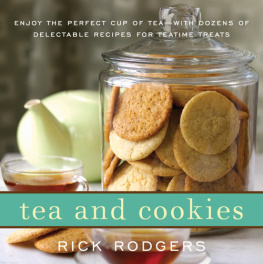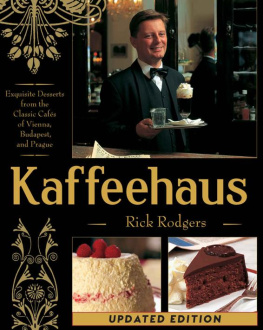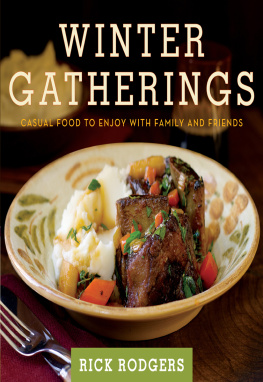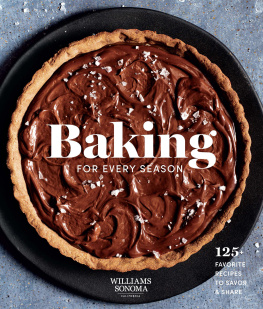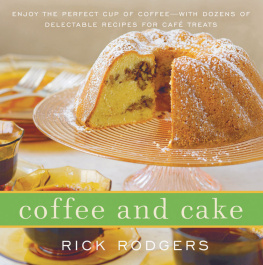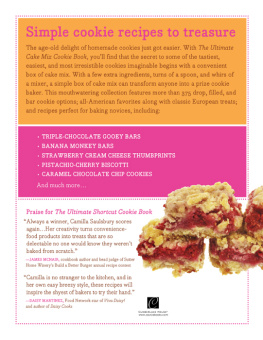Contents
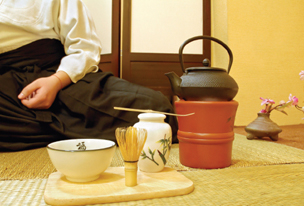
The classic Japanese tea ceremony.
JapanTeaCeremony istockphoto.com/eAlisa
F or centuries, tea has been served whenever people gather. In Japan, where tea is deeply rooted in the culture, a tea ceremony is one of the highest honors that a host can bestow on his guests. Chinese culture also reveres tea, and at a traditional wedding, the bride and groom serve their parents tea as a symbol of their respect and devotion. In many Russian homes, the samovar, a gorgeous metal urn for holding brewed tea, is prominently displayed as the familys primary heirloom. And while the meal known as British High Tea began as a way to feed the upper classes, it can also be informal, and at its finest is a time for serving beautifully prepared edibles on your best china.
This sensibility has carried over to America, where an invitation to take tea promises more than just a meal; it is an opportunity for intimate conversation and peaceful reflection. In my corner of New Jersey, I have three world-class tea purveyors within a short drive of my house, and a number of appropriately cozy tea shops offering tea parties.
But what should accompany a cup of tea? While savory foods are usually on the menu, sweets are a constant. When food is carefully prepared in bite-size portions, the elegance factor rises. And cookies, which are really just small, individually sized cakes, are always part of the teatime menu.
Tea and Cookies celebrates this happy combination of beverage and dessert. The book starts with a primer on the basics of tea, from production to pouring the perfect cup. It is followed by a collection of hot and cold tea-based beverages that demonstrate unique ways to enjoy your cup.
After another primer on the important elements of baking cookies (ingredients, equipment, and techniques), youll find sweet things to nibble on, inspired by tea-friendly foods from all over the globefrom French madeleines and macarons to Scottish shortbread. Some of the cookies are particularly sophisticated (such as the dramatically dark Chocolate Sandwich Cookies with Earl Grey Ganache), but even the rustic or homey varieties have a twist that will take them beyond mere snack foods (the Snickerdoodles are flavored with spices that you are likely to find in Indian chai).
Whether you are serving a large group of friends, preparing a quiet tea for two, or indulging in a personal treat, this book will guide you through the perfect pairings of tea and cookies.
A fter water, tea is the most consumed beverage in the world. Entire books have been devoted to its history, production, and cultural role, to name just a few topics. While by no means exhaustive, this primer serves as an introduction to tea that will help you make an informed purchase at any tea shop.
HISTORY OF TEA
The story of tea begins in the mountainous area where present-day China, Vietnam, Myanmar, and Thailand meet, but it was the far-reaching Chinese culture that helped bring this ancient delicacy to all corners of the world. In todays languages, almost every word for tea has evolved from the Cantonese and Mandarin (cha) or Amoy dialect (te).
For at least three thousand years, humans have brewed the leaves of the evergreen Camellia sinensis tea bush. One legend of teas origin tells how the Divine Farmer saw some leaves from a nearby tree fall into a pot of boiling water. His curiosity drew him to taste the brew, and tea was discovered.
In ancient China, tea was regarded not only as a food, but as a medicine. The three main religions of ChinaBuddhism, Confucianism, and Taoismall considered tea to be a source of health and rejuvenation (monks noticed that it would keep them alert during meditation). From its origins, tea was regarded as more than just a way to quench ones thirst. But the technique of steeping tea leaves in hot water and then pouring the liquid into cups didnt evolve until the Chinese Ming era (13681644).
By the ninth century, tea consumption had spread to Japan, probably when Buddhist monks brought home tea seeds from a pilgrimage to China. The Japanese picked up some of the rituals surrounding tea from the Chinese court, and these developed into the graceful tea ceremony that is still performed today. Japanese drinkers developed a preference for green tea, which is minimally processed, while the Chinese produced more complex, oxidized black tea along with the green tea varieties.
Tea was not introduced to Europe until the mid-seventeenth century. It was the Portuguese, then a major naval power, who first came upon tea during trade with China. Holland was politically affiliated with Portugal at the time, and tea became popular in The Hague. The British had their first brush with tea when Charles II married the Portuguese Infanta, Catherine of Braganza, and she introduced the Chinese beverage and its elegant serving rituals to the court. Here tea repeated the same modus operandi it had in Portugal and Holland, beginning as an expensive drink for the upper class but evolving into a beverage for common citizens as trade routes improved and prices plummeted. Before long, Parliament established monopolies to control the tea as a commodity, a policy that turned out to make lots of trouble for Britain around the world over the centuries.
As for America, New Amsterdam (later New York) was a Dutch colony well acquainted with the pleasures of tea, so it surfaced early in our countrys history. Among other indignities, it was the British manipulation of tea prices that led to the infamous Boston Tea Party and the start of the American Revolution.
While tea was an important beverage in British life, it reached its peak in the early 1800s, when it became the centerpiece of a light afternoon meal. At the time, there were only two meals, breakfast and dinner. Anna, the seventh Duchess of Bedford, started offering a light repast in the late afternoon to tide over the appetites of her entourage at her summer castle. It was such a success that when she returned to London, she kept up the practice. This started a fashion for afternoon tea, which emphasized genteel conversation without alcoholic beverages. Before tea, gin and beer were the most popular British beverages, and the cause of many social problems.
Throughout the eighteenth century, the British coffeehouses served both coffee (another tropical delicacy) and tea, and were social gathering places that were essentially mens clubs. In the early nineteenth century, tea gardens, outgrowths of coffeehouses, became especially popular because they allowed (accompanied) middle-class women as clientele. (The first tea garden was owned by Thomas Twining, whose tea company is still a major force in the industry.) To get immediate attention from the waiter, a gentleman was invited to put money in a box marked T. I. P. S., an acronym for To Insure Prompt Ser vice, and the beginning of our custom of giving gratuities to restaurant servers.
Tea, which grows in tropical and subtropical conditions, was not the only reason for British colonization in hot climates, but the practice did help keep Britain well supplied with this important commodity. British efforts made India the most important region for tea production in the world. In the mid-1800s, after much experimentation with different varieties, a hybrid of Chinese and the local Assam tea (which may or may not be a strain of the Chinese plant) was developed, creating a particularly vigorous plant that became the backbone of the international tea industry. Indian tea remains a force because it is a primary ingredient in many of the most popular blended teas, especially supermarket varieties.
Two important American innovations changed the way people drink tea: iced tea and the tea bag. The first was the result of a vendors effort at the 1904 St. Louis Worlds Fair to unload some hot tea that wasnt selling well in the oppressive summer weatherpoured over ice, the tea was a hit. Tea bags were originally small paper packages of loose tea that were used by a tea merchant as samples. He noticed that his customers were not removing the tea from the bags to save them the trouble of straining out the leaves, and tea bags were born. Tea bags were a great timesaver, as tea could be made right in the cup without a teapot and strainer, but they also diminished the role of ritual in making tea.
Next page
